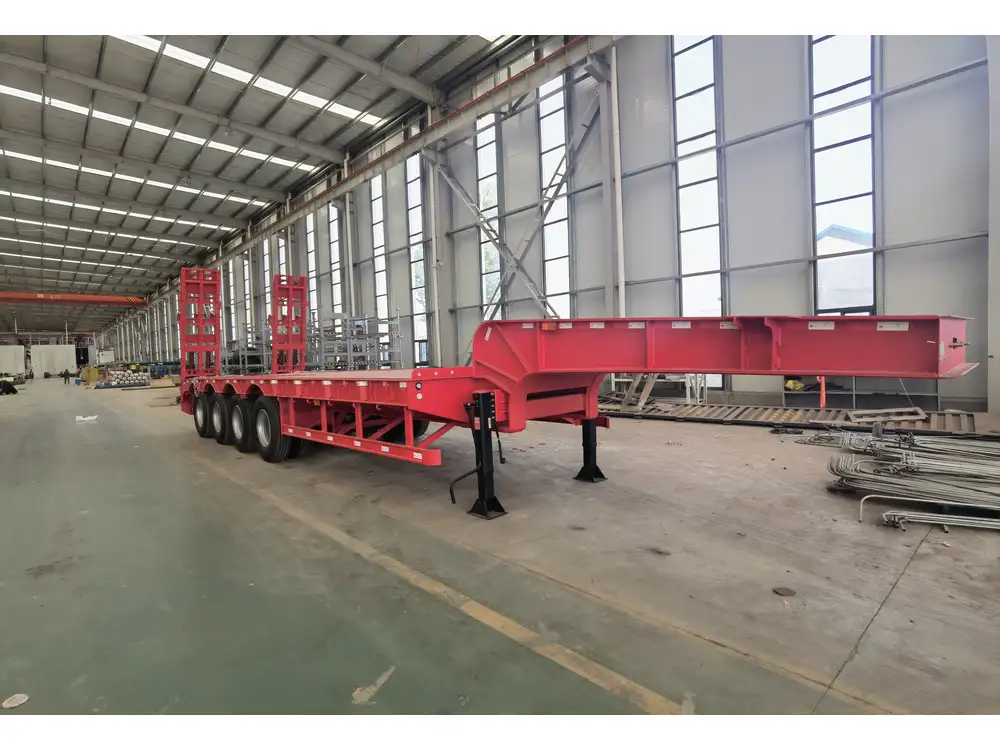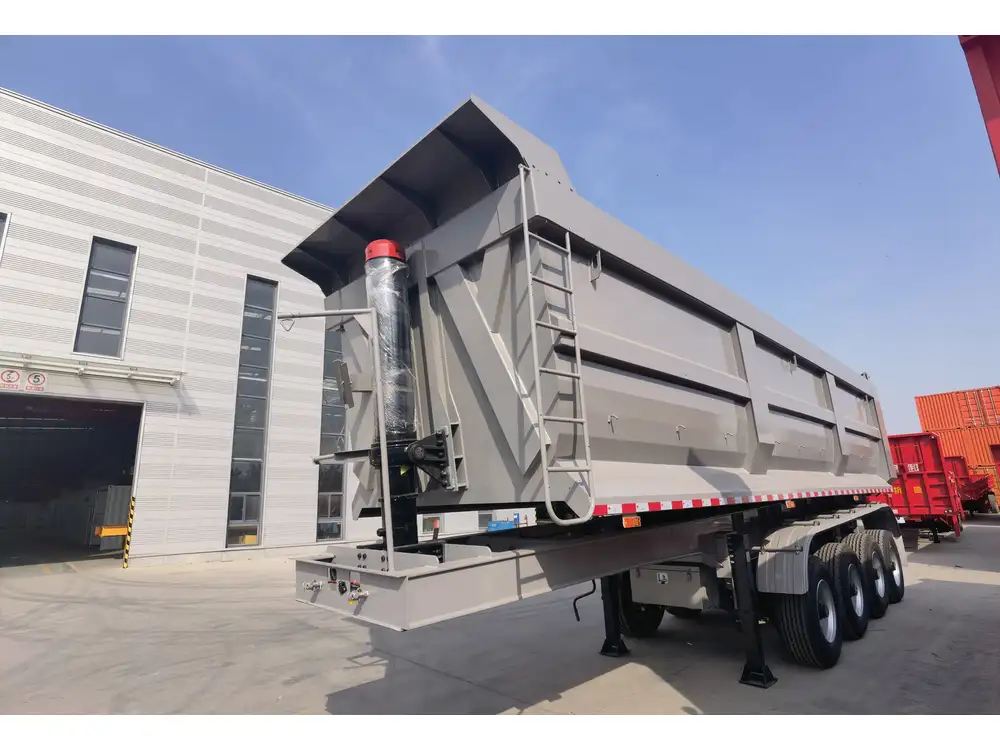When considering logistics and transportation, understanding the dimensions of your vehicle is crucial for operational efficiency. One of the most frequently used trailers in the freight industry is the 53-foot semi-trailer. Its size provides a balance of capacity and maneuverability that suits various shipping needs.
Dimensions Breakdown of a 53-Foot Trailer
A 53-foot trailer is a popular choice for freight transport due to its ample interior space. Let’s break down the dimensions to clear any ambiguity:
| Dimension Type | Measurement |
|---|---|
| Length | 53 feet (16.15 meters) |
| Width | 8.5 feet (2.59 meters) |
| Height | 13.5 feet (4.11 meters) |
| Cargo Space (Volume) | Approximately 3,800 cubic feet |
| Maximum Load Capacity | Typically around 45,000 pounds |
The Height of a 53-Foot Trailer
A 53-foot trailer stands at a maximum height of 13.5 feet when loaded, adhering to federal bridge laws. This measurement includes the height of the trailer itself and accounts for any additional cargo height. Below are considerations regarding the height of these trailers:
Federal Regulations: It’s critical to comply with federal height regulations to avoid fines and ensure the safe transportation of goods. Individual states may have specific height restrictions.
International Standards: If you are operating beyond U.S. borders, familiarize yourself with international standards which may differ significantly, influencing clearance requirements.
Loading Constraints: The type of cargo and loading method may affect the final height, especially in cases of stacking or loading above trailer sides.

Why Choose a 53-Foot Trailer?
Ample Cargo Space
The largest standard trailer in the U.S., the 53-foot trailer, is capable of carrying large quantities of goods while remaining versatile for various freight types. Here’s why it’s so desirable:
Versatility: It can accommodate both palletized freight and oversized items, making it invaluable in diverse shipping scenarios.
Efficiency: More cargo capacity translates to fewer trips, which can significantly reduce transportation costs.
Cost-Effectiveness
Choosing the correct size trailer can lead to substantial savings:
Fuel Efficiency: A 53-foot trailer can carry more while consuming less fuel per ton of freight compared to smaller trailers.
Lower Transportation Costs: More products in one run can mean reduced handling costs and lower overall shipping quotes.

Key Considerations When Operating a 53-Foot Trailer
Operating a 53-foot trailer requires understanding specific regulations and considerations that may affect your logistics plans:
Maneuverability
With a length of 53 feet and a width of 8.5 feet, maneuvering can become challenging in tight spaces:
- Turning Radius: Evaluate the turning radius when planning routes to avoid difficult intersections and tight corners.
Parking Space Requirements
Freight terminals, warehouses, and loading docks must accommodate the dimensions of a 53-foot trailer:
- Equipment Compatibility: Ensure employees and loading equipment are trained to handle larger trailers safely.

Height Clearance
Always consider bridge heights and overpass limitations. Here are some best practices:
- Pre-Trip Planning: Use GPS systems that account for trailer height to avoid low bridges and overpasses.
Loading and Unloading a 53-Foot Trailer
Success in the transportation industry hinges on efficient loading and unloading practices. Here are essential tips to facilitate this process:
Weight Distribution
Evenly distributing weight is paramount for stability and safety:
- Front-to-Back Balance: Place heavier items in the front and lighter ones in the back when possible.

Loading Methods
Utilizing the correct loading methods can optimize space:
- Forklifts and Pallet Jacks: Employ appropriate machinery to minimize manual handling and reduce the risk of injury.
Securing Cargo
Properly securing all cargo is non-negotiable:
- Straps and Dunnage: Use straps, dunnage bags, and other securing methods to prevent shifting during transit.
Hazmat Considerations
If hauling hazardous materials:
- Weight and Height Restrictions: Ensure that total weight remains within limits and that the trailer is compliant with relevant regulations.

Common Challenges with 53-Foot Trailers
While very effective in many scenarios, operating 53-foot trailers can also pose certain challenges:
Regulatory Compliance
It’s crucial to remain compliant with transportation laws:
- Local and State Variations: Each state has its own set of laws regarding height and weight regulations that must be adhered to.
Maintenance Requirements
Regular maintenance checks can prevent delays and costly repairs:
Tire Pressure: Maintaining proper tire pressure contributes to safety and fuel efficiency.
Brake Checks: Regularly inspect brake systems to ensure reliable performance.

Insurance and Liability
Understanding insurance coverage can save costs and risks:
Liability Coverage: Ensure your policy adequately covers the value of goods in transit.
Cargo Insurance: Consider purchasing cargo insurance to protect goods in case they are damaged during transit.
Economic Impact of 53-Foot Trailer Transportation
The use of 53-foot trailers significantly influences the logistics sector:
Job Creation
Trucking companies hiring drivers and support staff contribute to local economies.

Environmental Considerations
Maximizing capacity helps to reduce the carbon footprint per shipment, making 53-foot trailers an eco-friendlier option compared to smaller units.
Conclusion
Understanding the specifics of a 53-foot trailer, including its dimensions, benefits, challenges, and operational requirements is paramount for logistics professionals. The efficient transport of goods hinges on meticulous planning, compliance with regulations, and strategic use of resources. This vital knowledge empowers companies to make informed decisions that enhance productivity and reliability in their supply chain operations.
By focusing on these strategic insights, businesses can outperform competitors in the logistics industry, ensuring safety and satisfaction with every shipment.



